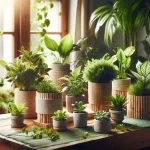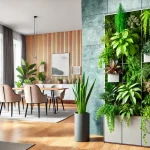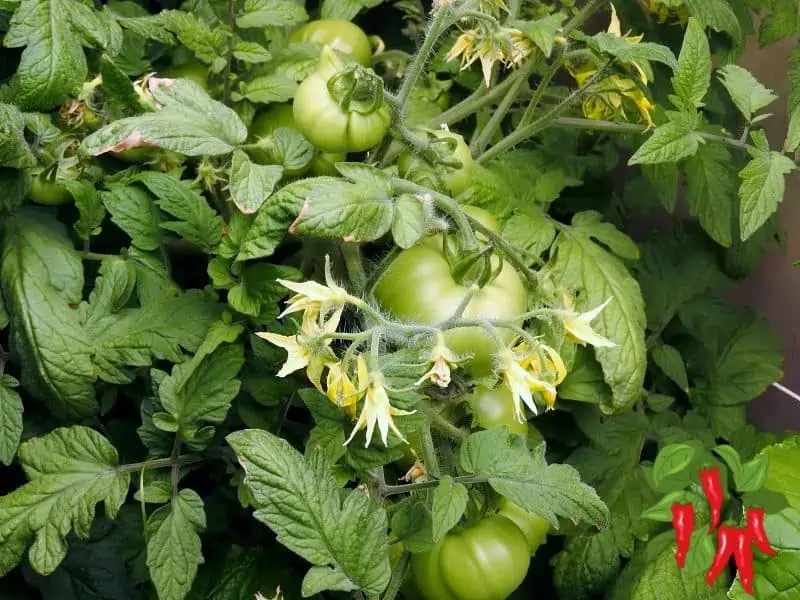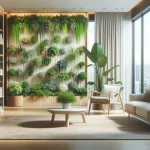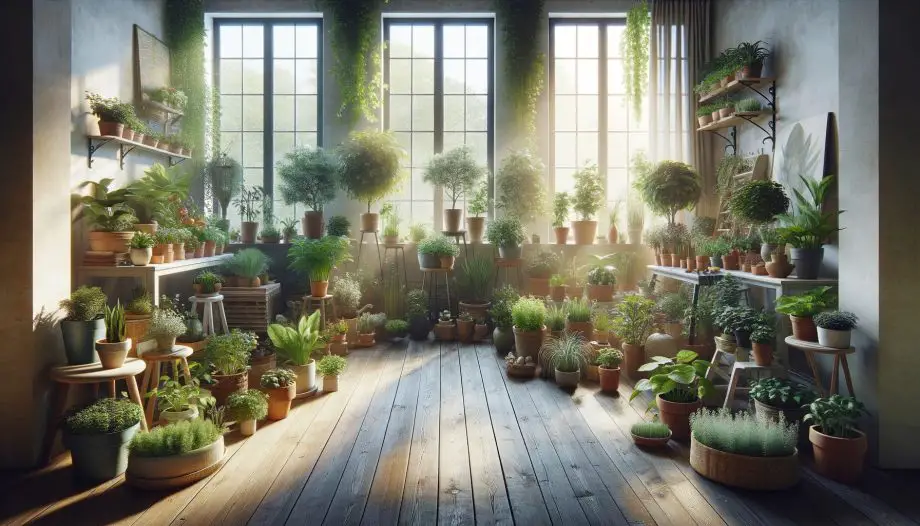This post may contain affiliate links. If you buy something from one of our links we may earn a commission. Thanks
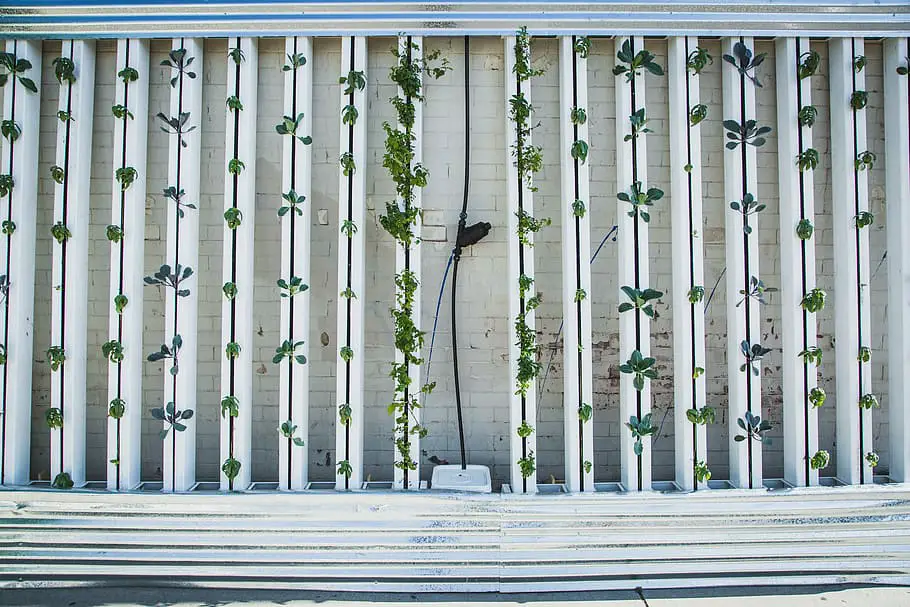
Indoor vertical hydroponics offers an innovative solution to urban gardening challenges. Struggling with limited space?
Imagine growing fresh produce right in your living room. Dive into the world of vertical hydroponics and discover how to maximize your indoor garden’s potential.
Indoor Vertical Hydroponics Key Takeaways
- Indoor vertical hydroponics allows you to grow plants in vertically stacked layers, maximizing space and efficiency.
- This method is ideal for urban dwellers, providing fresh produce year-round with minimal space.
- It uses nutrient-rich water solutions instead of soil, making it a clean and efficient gardening option.
Indoor Vertical Hydroponics Guide for Beginners
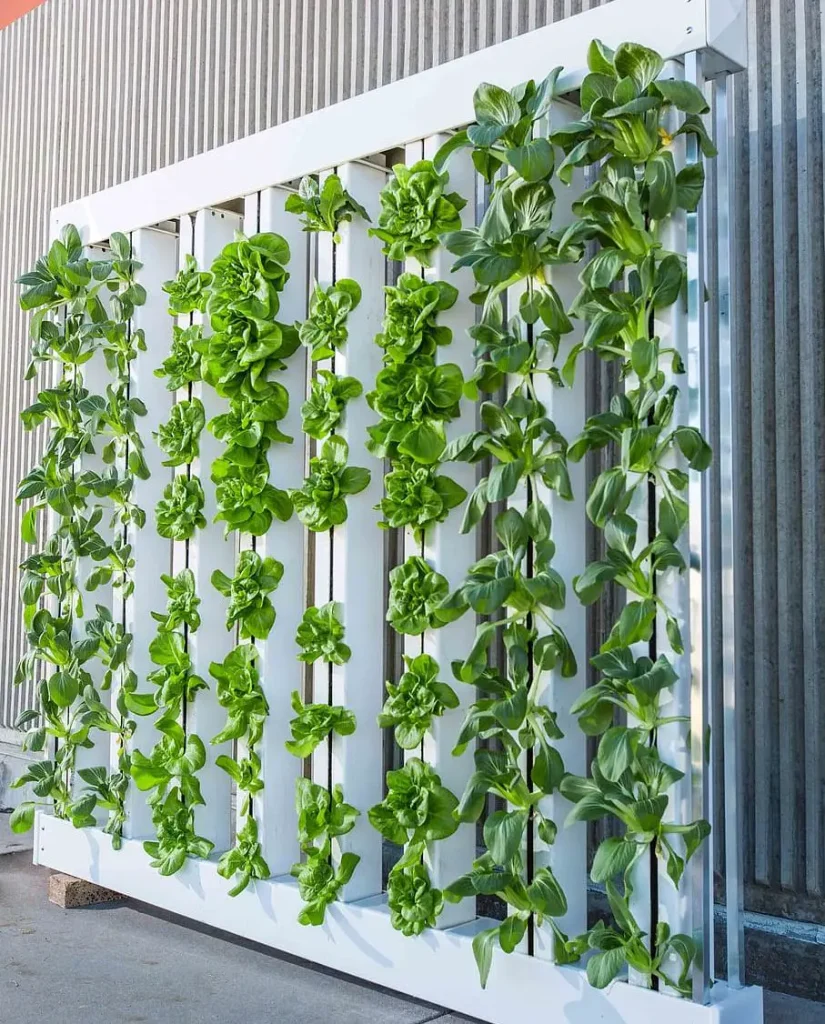
Vertical hydroponics is a fantastic method for growing plants in limited spaces, making it ideal for urban gardeners or those with small indoor areas.
The purpose of this blog post is to help you understand and set up your own vertical hydroponic garden.
1. Introduction to Vertical Hydroponics
Well, howdy everyone! Indoor vertical hydroponics is a game-changer for anyone wanting to grow plants in tight spaces.
Whether you’re in an apartment or just love innovative gardening, this method brings the garden inside, stacking plants in layers and using nutrient-rich water instead of soil. Let’s explore the essentials!
Definition
Vertical hydroponics involves growing plants in vertically stacked layers, often in towers or wall-mounted systems, allowing for efficient use of space and resources. This method is perfect for those with limited space but big gardening dreams.
Benefits
Maximizes space, reduces water usage, and can be set up indoors or outdoors, making it perfect for urban environments. Not only does it save space, but it also makes gardening more accessible and eco-friendly. Imagine fresh greens right from your living room!
2. Types of Vertical Hydroponic Systems
Let’s dive into the types of vertical hydroponic systems that can turn your limited space into a lush green haven. Whether you’re new to hydroponics or looking to expand, these systems have got you covered.
Vertical Towers
Hydroponics Tower Garden Growing System, 30-Plant Vertical Indoor Gardening System
Vertical towers are cylindrical structures where nutrient-rich water is pumped to the top and trickles down to nourish the plants.
These towers are perfect for compact spaces and ensure even light distribution, making them ideal for growing a variety of plants indoors.
Wall-Mounted Systems
36 Pockets Self Watering Vertical Planters Indoor Outdoor Living Wall
Wall-mounted systems use felt-like materials to hold plants in place on vertical walls.
This setup is fantastic for adding a decorative touch to your space while saving floor space. It’s a great way to turn any wall into a productive garden.
A-Frame Systems
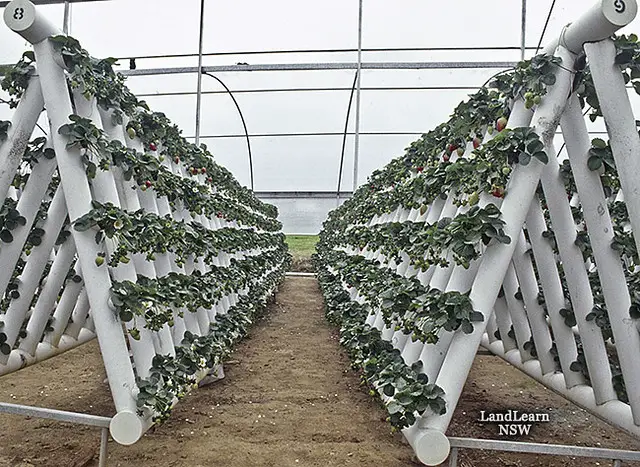
A-frame systems are A-shaped structures that allow for planting on both sides, offering excellent light exposure and maximizing space usage.
These systems are great for those with a bit more room and are perfect for growing a large number of plants efficiently.
3. Choosing the Right Plants
Gardyn Hydroponics Growing System 4.0 & Vertical Garden Planter | Indoor Smart Garden| Includes 30 Non-GMO Indoor Plants, Herbs & Vegetables & LED Grow Lights for Your Home Indoor Gardening System
Howdy, fellow gardeners! When it comes to indoor vertical hydroponics, picking the right plants is key to your success.
Some plants just love this setup more than others, so let’s look at the best choices and what you should consider.
Best Choices
Leafy greens like lettuce, spinach, and kale are top picks for vertical hydroponics. These greens thrive in hydroponic systems and don’t need much root space.
Herbs such as basil and mint are also fantastic choices. And don’t forget strawberries – they’re great for adding a fruity touch to your indoor garden.
Considerations
When choosing plants, go for ones with shallow root systems and a love for consistent moisture levels.
These traits make them perfect for vertical hydroponic setups. By picking the right plants, you’ll set yourself up for a thriving and bountiful garden.
4. Setting Up Your Vertical Hydroponic Garden
Indoor Garden Hydroponics Growing System, 60 Pods Vertical Garden with LED Grow Light
Alright, folks, it’s time to set up your vertical hydroponic garden! Whether you’re a seasoned gardener or just starting, getting the setup right is crucial.
Let’s break it down step by step.
Location
Pick a spot with plenty of light. A south or west-facing window is ideal. If you’re short on natural light, no worries!
Full-spectrum grow lights will do the trick, ensuring your plants get the light they need to thrive.
Essential Equipment
You’ll need a few key pieces of equipment to get started:
- Vertical gardening frame: The backbone of your setup.
- Hydroponic nutrient solution: Feeds your plants with all the necessary nutrients.
- Water pump for nutrient circulation: Keeps the nutrient solution flowing.
- Grow lights (if needed): Provides light when natural light isn’t sufficient.
- pH meters and TDS meters for mixing nutrient solution: Ensures the nutrient solution is balanced and ready for your plants.
Designing Your System
Decide between a tower or wall design based on your available space. Towers are great for round spaces and are typically easier to set up.
Wall designs are perfect for narrow areas, turning any wall into a green, productive space.
With the right setup, your indoor vertical hydroponic garden will be up and running in no time, ready to produce fresh, healthy plants.
5. Nutrient and Water Delivery Systems
Alright, friends, let’s talk about the lifeblood of your vertical hydroponic garden: nutrient and water delivery systems.
These systems ensure your plants get the hydration and nutrients they need to thrive. Here are the main methods you can use.
Drip Irrigation
Drip irrigation is a popular method that delivers water and nutrients directly to the plant roots.
This system uses a network of tubes and emitters to drip the nutrient solution onto the root zone.
It’s super efficient, minimizing waste and ensuring each plant gets exactly what it needs.
Nutrient Film Technique (NFT)
The Nutrient Film Technique, or NFT, involves a thin film of nutrient solution flowing over the roots of your plants.
This setup allows for excellent oxygenation, as the roots are exposed to air while being constantly fed with nutrients.
It’s a great method for plants that thrive in a water-based environment and need lots of oxygen.
Aeroponics
Aeroponics takes things up a notch by suspending the roots in the air and misting them with nutrient solutions.
This method maximizes oxygen intake, which can boost plant growth and health. It’s like giving your plants a spa treatment every day!
I love aeroponics but I only recommend it for experienced growers who have the time to monitor it. Not a hands off laid back system.
To use true aeroponics you will probably need to build it from scratch.
Choosing the right system for your garden depends on your plants’ needs and your setup.
Each method has its benefits, so pick the one that fits best with your gardening style and space. Happy growing!
6. Maintenance and Troubleshooting
Hey there, green thumbs! Keeping your indoor vertical hydroponic garden in tip-top shape requires regular maintenance and a bit of troubleshooting now and then. Here’s a handy guide to help you stay on top of things.
Regular Tasks
Maintaining your vertical hydroponic garden involves a few key tasks.
- Maintain reservoir water levels
- Top up the nutrient solutions regularly and keep an eye out for any algae growth by cleaning the system periodically.
- Check pH and TDS levels weekly to ensure your plants are getting the right nutrients.
- Monitoring plant health is also crucial; look for any signs of nutrient deficiencies or disease.
Common Issues
Even with regular care, you might encounter some common issues.
Water pressure problems can affect nutrient distribution, so make sure your pumps are working correctly.
Mineral build-up in the system can clog parts and hinder plant growth, so clean components regularly.
Light distribution can also be a challenge; ensure all plants receive adequate light, adjusting grow lights if necessary.
Dealing with Pests and Diseases
While hydroponic systems generally have fewer pests than soil gardens, they’re not immune.
Regular inspections can help you catch any issues early. If you spot pests or diseases, take prompt action to remove affected plants and treat the problem.
Maintaining cleanliness in your system will also help prevent these issues.
By staying vigilant and proactive, you can keep your vertical hydroponic garden healthy and productive. Happy gardening!
7. Cost Considerations
Let’s talk money. Setting up an indoor vertical hydroponic garden can be an investment, but the long-term benefits often make it worth it. Here’s what you need to know about costs.
Initial Investment
Getting started with a vertical hydroponic system can be pricey. The equipment, like vertical gardening frames, water pumps, and grow lights, can add up.
If you’re on a budget, consider DIY options. Many gardeners build their own systems using affordable materials, which can significantly cut costs.
Long-Term Savings
Once you’ve set up your system, the efficient use of water and nutrients can lead to long-term savings.
Hydroponic systems use less water than traditional soil gardening and precisely deliver nutrients, reducing waste.
You can grow fresh produce year-round with indoor vertical hydroponic systems.
Over time, these savings can offset the initial investment, making vertical hydroponics a cost-effective choice.
By understanding the costs and potential savings, you can make informed decisions and enjoy the benefits of indoor vertical hydroponics without breaking the bank. Happy growing!
8. Conclusion: The Rewards of Vertical Hydroponics
Well folks, we’ve reached the end of our vertical hydroponics journey. There are so many rewards to enjoy, from environmental benefits to the sheer joy of harvesting your own fresh produce. Let’s wrap up with the highlights.
Environmental Benefits
Vertical hydroponics offers significant environmental perks. You’ll use less water compared to traditional gardening, and with fewer pesticides, it’s a cleaner, greener option.
Plus, growing your food locally means fewer carbon emissions from transport. It’s a win for you and the planet.
Personal Satisfaction
There’s nothing quite like the satisfaction of enjoying home-grown produce. With vertical hydroponics, you can have a lush green wall right in your home.
It’s not just about the food; it’s about the joy and beauty of gardening indoors.
Learn more: Indoor Vertical Gardening: Start Your Indoor Garden Now
Key Takeaways
- Efficient Space Use: Maximize your growing area with vertical systems.
- Water Savings: Use significantly less water than traditional gardening.
- Pesticide Reduction: Grow cleaner, healthier plants with fewer chemicals.
- Local Produce: Enjoy fresh food right from your home.
- Satisfaction: Experience the joy and beauty of indoor gardening.
So there you have it! Vertical hydroponics is a fantastic way to bring gardening into your home, save resources, and enjoy fresh, healthy produce. Happy gardening, and keep it green!
Indoor Vertical Hydroponics FAQs
I’ve gathered some common questions about vertical hydroponics to help you get started. Let’s dive into these FAQs.
Q. What is the best light for vertical hydroponic gardening?
A. Full-spectrum grow lights are ideal for indoor systems, ensuring your plants receive the necessary light for growth. These lights mimic natural sunlight, providing the right spectrum for photosynthesis and healthy plant development.
Q. Can root vegetables be grown in vertical hydroponics?
A. Typically, no. Root vegetables like carrots and potatoes need more soil depth than what vertical systems can provide. Stick with leafy greens, herbs, and fruits like strawberries for the best results.
Q. How often should pH levels be checked?
A. Check pH levels at least once a week to ensure optimal nutrient absorption. Maintaining the correct pH is crucial for your plants to take in nutrients effectively and stay healthy.
Q. Can tap water be used?
A. Yes, but it’s essential to check and adjust its pH. If your tap water has high chlorine levels, let it sit out for a day to allow the chlorine to dissipate before using it in your hydroponic system.
I hope these answers help you on your hydroponic journey! Keep those questions coming, and happy gardening!
Visit my Amazon Influencer Page for videos and gardening products Grow Your Own Garden









